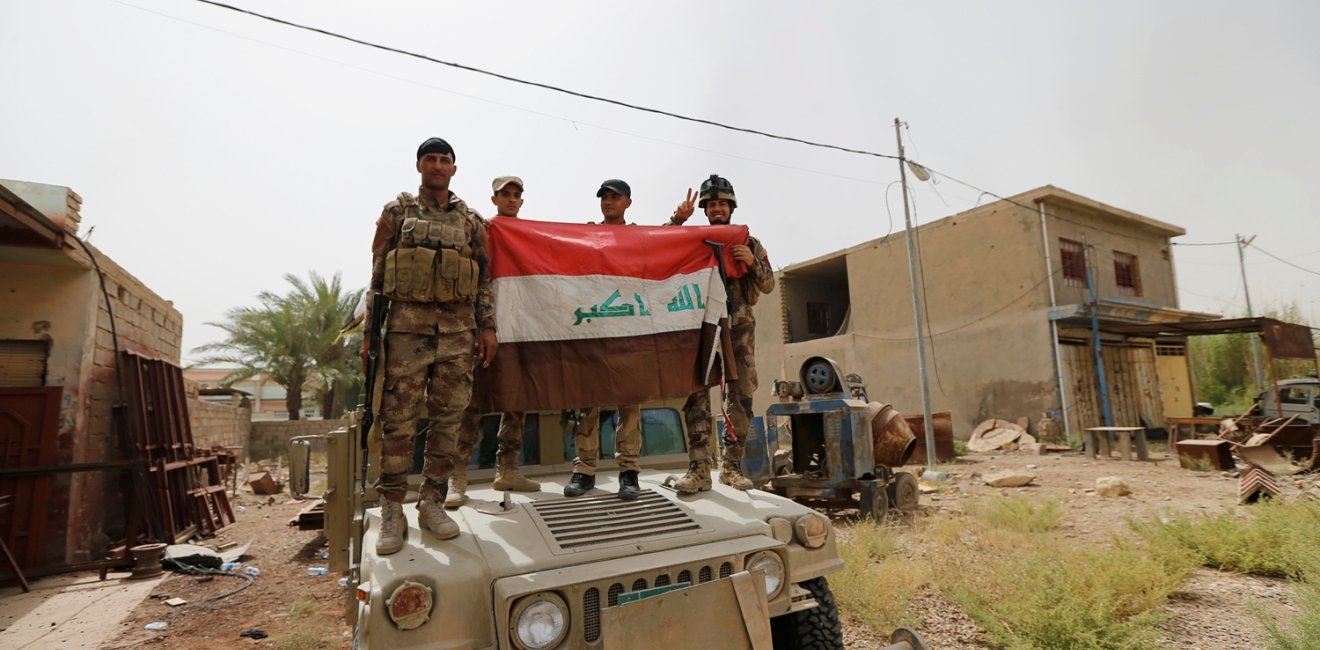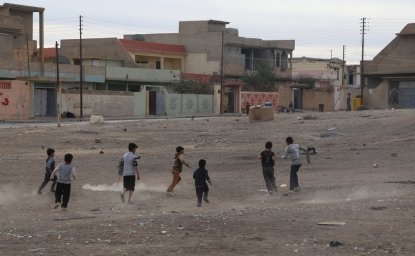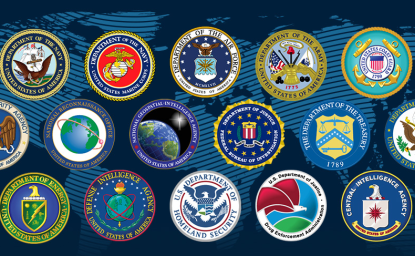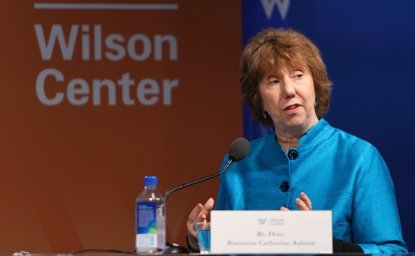The war against ISIS as a proto-state controlling and governing territory is showing signs of progress, although the appeal of the Islamic State ideology and its capacity to inspire acts of terror appear undiminished.
In Iraq and Syria, ISIS has been losing territory, although slowly and with much resistance. According to the U.S. government, the jihadi organization has lost 40 percent of the territory it once controlled in Iraq and 20 percent of what it controlled in Syria. Operations against the organization’s two major strongholds, Raqqa in Syria and Mosul in Iraq, have started, although their progress is slow and fitful.
Though limited, the support Washington has provided to the Iraqi military and to Kurdish fighters in Iraq and Syria has been key. Without the bombing of ISIS positions, and to a lesser extent the training and weapons the United States has been providing, ISIS would remain much stronger than it is.
How much this intervention has benefited the United States is open to question.
If the organization responds to loss of territory in the Levant by escalating terrorist attacks in other countries, the United States’ own domestic security could be at risk. Meanwhile, intervention in Syria and Iraq has already forced the United States into de facto alliances with organizations it does not want to support -- for example, the Tehran-backed Popular Mobilization Forces in Iraq, or PMF -- and with countries whose goals it does not share, above all Russia and Iran.
Unfortunately, such inconvenient alliances are not the result of poor but reversible decisions by the Obama administration, but of the complexity of the situation in the region, which the United States cannot orchestrate to its own liking. Washington is simply not in a position to build the Middle East it would prefer, and is being forced as a result to accept difficult compromises and enact contradictory policies. Far from being a temporary aberration, this is probably the shape of things to come in the region.
Iraq: An Enemy to Every Ally
In Iraq, the United States backs the government of Prime Minister Haider al-Abadi and the Iraqi military in the fight against ISIS, providing weapons and training for the military. More than 4,000 military advisers are in Iraq. Deployed ever closer to the battlefield, they are indeed beginning to take casualties. But backing the government also entails accepting the presence in combat situations of Shiite militias that the United States would like to sideline, and implicit cooperation with the Islamic Republic.
Summoned into existence in 2014 by Grand Ayatollah Ali al-Sistani, who called on all Iraqis to mobilize in defense of their country after the army collapsed in Mosul, the militias are almost exclusively Shiite. The PMF includes many different groups acting independently of each other, although they are nominally under the authority of the prime minister. In reality, some commanders, such as Hadi al-Amiri of the Badr Organization, are much closer to Iranian Gen. Qasem Soleimani and his Quds Force than to al-Abadi. The militias are also politically influential, with some commanders stating openly that the PMF must be transformed into an official force modeled after Iran’s Islamic Revolutionary Guard Corps, or IRGC. PMF members receive salaries and equipment from the Iraqi government, and at least some of them also receive support and training from the IRGC.
The situation the United States faces in Iraq and Syria is unfortunately likely to become the new normal in the Middle East.
The United States would like to keep the militias out of the fighting in Sunni areas, but it has failed to do so. The Iraqi military needs the support of the militias, and al-Abadi is too weak politically to challenge the more powerful militia commanders. As a result, the United States ends up supporting the PMF as well as the Iraqi army when it bombs ISIS targets. This support is both distasteful and politically dangerous. Militias tend to be vocally anti-American, and in a disturbing number of instances they have carried out acts of reprisal against the Sunni populations of areas they liberated, suspecting them of being ISIS supporters.
Another somewhat inconvenient U.S. ally in the war against ISIS is the peshmerga, the military forces of the Kurdistan Regional Government. Their participation is fully welcomed by the United States because they are motivated, listen to American trainers, and are willing, even anxious, to coordinate their operations with American advisers. Politics, however, complicate a good military relationship. Iraq’s autonomous Kurdish region does not hide that its ultimate goal is independence, which Baghdad opposes. To avoid increasing tensions, the United States channels weapons meant for peshmerga through the Iraqi government, which, according to the Kurds, may or may not pass them along. Further irritating the Kurds, Washington rejects the idea of Kurdish independence, clinging instead to the utterly unrealistic concept of an Iraq united under an inclusive democratic government. As long as ISIS remains the dominant threat, differences between the United States and the Kurds are glossed over by both sides, but they are bound to become more problematic in the future.
The major post-ISIS problem will emerge because of the virtual absence of Sunni forces in the battle. U.S. hopes of reviving the strong Sunni militias that helped defeat al-Qaeda in 2007-2008 proved unfounded. The Iraqi parliament rejected the idea, seeing large Sunni militias as potential ISIS allies. Sunnis did not trust the Iraqi government after it reneged on promises to continue funding Sunni militias, nor did they trust the United States, believing it had let them down in the past. As a result, while some Sunni tribal militias take part in some battles, there is no evidence that these militias are large or play an important part. The defeat of ISIS risks leaving Sunnis more powerless and resentful than ever.
The war against ISIS in Iraq is forcing the United States into very awkward situations: Washington cannot support the government without accepting the Shiite militias, which are also supported and advised by Iran. It cannot openly arm the peshmerga, which is an effective fighting force, because of the political sensitivities of the Iraqi government, and this makes them less effective fighters. It wants to strengthen the military and summon into existence reliable Sunni militias, but is having difficulty doing so. But if it wants to fight ISIS, it has to accept all the complications and contradictions inherent to the situation.
Fighting Two Enemies in Syria
The fight against ISIS in Syria is forcing the United States to work with even more problematic allies. Washington opposes the government of President Bashar Assad, and it also opposes the Islamic State, and most of the Sunni organizations that fight both Assad and ISIS. Such Sunni organizations include the al-Qaeda-affiliated Nusra Front and other radical Sunni armed groups.
Since it cannot work with the government and does not trust most Sunni organizations, the United States can only seek the help of Syria’s Kurds, who come with heavy baggage. The United States is backing the Kurdish Democratic Union Party (PYD) which now controls a long swath of territory along most of the border with Turkey. But supporting the PYD and its YPG militia puts the United States at odds with Turkey, which considers the PYD to be part of the Kurdistan Workers’ Party, or PKK, the main Kurdish opposition party in Turkey, which both Ankara and Washington designate as a terrorist organization.
Support for the PYD also risks alienating the very limited number of Sunni organizations the United States considers sufficiently moderate to consider working with: the YPG-controlled territory includes many areas where the population is predominantly Sunni. In an attempt to remedy the problem, the United States helped establish the Syrian Democratic Forces, a supposedly Kurdish-Sunni organization that is in reality 80 percent Kurd. In a perverse way, U.S. support for the PYD may also play into the hands of the Assad government, which until now has tacitly accepted Kurdish control of Northern Syria as a preferable alternative to ISIS control.
The Syrian military, which the United States opposes but does not fight, is supported by Iran and Hezbollah, which has had as many as 6,000 men in Syria and has taken heavy casualties. The Syrian military fights ISIS and the Nusra Front, which puts it on the same side as the United States, but it also fights all other opposition forces, including those to which the United States has intermittently provided some support. While fighting ISIS, the United States and the Syrian military also compete over who will benefit from military victories. In mid-June, for example, two military forces were converging on the ISIS capital of Raqqa: The YPD with its Sunni allies in the Syrian Democratic Forces were conducting operations from the north, while the Syrian military was moving in from the west, raising the question of who would get there first and what would happen next. Although the Syrian advance was halted by an ISIS counteroffensive, and the Syrian Democratic Forces are still fighting to recover the city of Manbij before moving further south, it is only a matter of time before the issue arises again.
In Iraq and Syria, ISIS has been losing territory, although slowly and with much resistance.
Another complication is Russian involvement, which is of marginal importance in Iraq but a major factor in Syria. In September 2015, Russia intervened in the Syrian civil war in support of Assad. The United States criticized Russia for not focusing its efforts on ISIS and also predicted that Putin would soon find himself trapped in a quagmire. Russia avoided such a quagmire by following the U.S. example and limiting its efforts mostly to bombing. This helped Assad regain control in many areas he had lost, and eventually allowed Moscow to turn its attention to the Islamic State. As a result, the United States increasingly finds itself fighting on the same side as Russia, indirectly supporting Assad’s efforts to remain in control, and cooperating with Russia in so-far failing attempts to negotiate cease-fires and get negotiations under way.
The New Normal
In the war against ISIS, the United States is fighting above all for its own security interests, as it should. Few believe at this point that the United States can transform the region, as many did when the United States first intervened in Iraq in 2003. Despite an occasional whiff of nation-building rhetoric emanating from well-intentioned intellectuals and from contractors in search of opportunities, and notwithstanding the commitment to providing humanitarian relief, the United States is staying in Iraq and Syria because it fears ISIS and other radical Islamist groups. In this fight, it lacks true allies in the sense of governments or other organizations that share its goals and its values. Even the partnerships of convenience it forges come burdened with unwanted linkages.
Of course, alliances and partnerships of convenience are never pure and unburdened by complications. Like all other countries, the United States has a long history of support for governments and organizations that do not share its values. But Syria and Iraq are extreme cases. The complexity of the political and military situation -- of which the present paper provides only a simplified sketch -- is extreme. But most importantly, in neither country does the United States have a single reliable partner. Even in Iraq -- the government the United States supports and would like to see become more democratic and inclusive -- is heavily influenced by Iran.
The situation the United States faces in Iraq and Syria is unfortunately likely to become the new normal in the Middle East. A region once divided between U.S. and Soviet allies, and where the United States wielded considerable influence, is now focused on internal conflicts and regional rivalries the United States cannot influence. Real ties between Saudi Arabia and the United States have greatly frayed and would be extremely difficult to restore, with Saudi Arabia now seeking protection not against the Soviet Union, but against Iran, with which the United States is seeking to restore normal relations. Egypt has become a political embarrassment, although geopolitical considerations have led Washington to pretend that all is well. Even a small country like Bahrain, where the United States maintains an important military installation, feels no need to take Washington’s preferences into consideration before essentially declaring war on its Shiite population. This list could continue.
The Middle East is too dangerous for the United States to withdraw, but it is too complicated for Washington to manipulate and change. This will force Washington to continue working with inconvenient allies for short-term, limited outcomes. This will be the new normal in the region.
The opinions expressed here are solely those of the author.
This article originally appeared in Real Clear World






